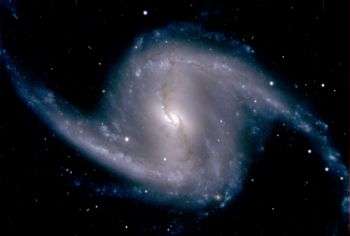Sussex astronomer probes 'dark energy' mystery as captured on camera

A University of Sussex astronomer has described seeing the as a "punching-the-air moment".
Dr Kathy Romer is among Sussex researchers involved in analysing data produced by the new Dark Energy Camera, an instrument capable of surveying 300 million galaxies up to eight billion light years away.
Scientists hope the international, collaborative project will help lead to an understanding of what is causing the Universe to rapidly expand. This force, given the term "dark energy", is regarded as ultimately destructive although it would taken many billions of years for our own solar system to be affected.
Dr Romer says: "The Universe seems to be ripping itself apart and we have no idea why. This new camera marks a breakthrough in our response to the discovery of the accelerating Universe. Till now we have been trying to reverse-engineer existing instruments to study dark energy, but this is the first one built specifically to study it.
"I was so excited when I saw the first images. It's not often that you get spontaneous 'punching the air' moments as a university researcher, and that was one of them."
The phone booth-sized device, installed on a mountain top in Chile, is the product of eight years of planning and construction by scientists, engineers, and technicians on three continents involved in the (DES). The first pictures of the southern sky were taken by the 570-megapixel camera on 12 September.
Dr Romer's roles include the development (together with finishing PhD student Leon Baruah) of a cluster-finding algorithm and observing galaxy clusters in the X-ray band. Dr Romer has also been part of a team that helped to choose which areas of the sky the DES camera (DECam) should study first.
The survey is expected to begin in December, after the camera is fully tested, and will take advantage of the excellent atmospheric conditions in the Chilean Andes to deliver pictures with the sharpest resolution seen in such a wide-field astronomy survey.
Over five years, the survey will create detailed colour images of one-eighth of the sky, or 5,000 square degrees, to discover and measure 300 million galaxies, 100,000 galaxy clusters, and 4,000 supernovae.
Provided by University of Sussex



















